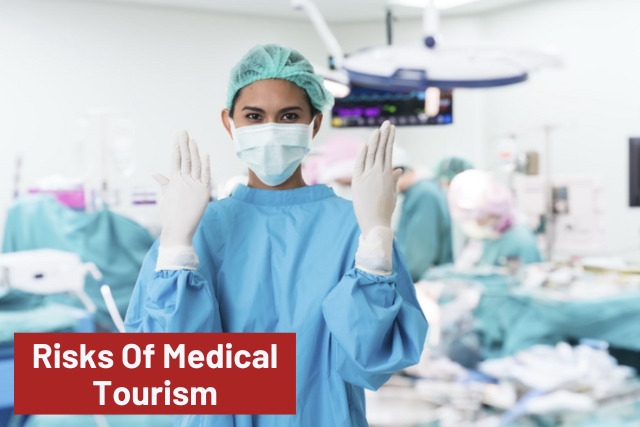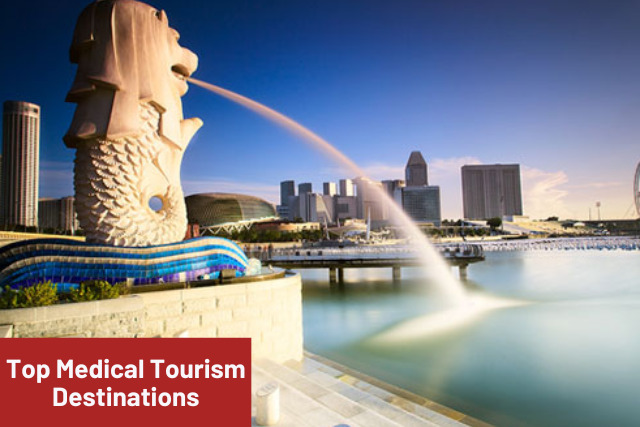
In the US, individual health spending has been constantly on the rise since the 1970s, increasing from $375 to an all-time high of $12,500 in just over 50 years.
But while America holds the global record for the most expensive care, the availability of the Internet and affordable international travel have put today’s patients in better control of their health. And, there’s a new, viable choice: traveling abroad to find high-quality and affordable care.
But what is medical Tourism? And what are the benefits and risks involved with traveling abroad for medical care?
Learn more below before booking your ticket.
What Is Medical Tourism? Features, Benefits & Risk
Medical tourism refers to the practice of traveling abroad to access higher-quality or more affordable medical care or receive treatments that are not available or approved in the country of origin.
Today’s global medical tourism market is valued at a whopping US$ 14 billion and, as international travel and information about procedures become more readily available, the industry is set to quadruple in size by 2028.
Every year, over 14 million people travel abroad for medical purposes, and some of the main reasons for doing so include:
- Cost savings on medical care, prescription drugs, or surgeries (especially if not covered by insurance in a traveler’s home country)
- Receive treatments and procedures that are not available or approved in their home country (i.e.: experimental treatments)
- Receive specialized care from world-class experts
- Avoid long wait times and paperwork
- Benefit from state-of-the-art medical infrastructure and MedTech
Healthcare standards vary widely across different regions, and some, such as the Asia-Pacific, are leading the way for the quality of care, affordability, accessibility, and digital adoption.
The Features & Benefits Of A Medical Tourism Destination
Undoubtedly, medical tourism is rising in popularity, and for more than a reason. But what makes a destination perfect for it? And how can patients benefit from traveling there? Here’s an overview:
Economic And Political Stability
The country’s economy and public image play an important role in how safe and comfortable patients feel, especially when they are in a vulnerable state such as the pre-surgery or recovery phase.
Some of today’s top medical tourism destinations include stable countries like Canada and Spain.
Lower Medical And Prescription Drugs Cost
Cost savings are a priority for travelers coming from countries where medical costs make some procedures inaccessible. For example, American travelers can save between 30% and 90% on the cost of the same surgery when performed overseas.
Higher Care Quality And Specialized Treatments
Some countries are internationally acclaimed for certain procedures (i.e.: South Korea for spinal cord injury surgery, India for heart surgery, and Thailand for gender reassignment procedures).
This makes surgeons in the region particularly expert in their field, thus delivering world-class excellence to patients.
Reduced Waiting Times
Surgical patients in the US might have to wait an average of four months to receive care. For patients needing emergency care, long waiting times can lead to irreversible or fatal health issues.
Availability Of Certain Medical Procedures
Medical standards change from one country to another. For example, in the US, patients eligible for bariatric surgery need to be at least 100 pounds heavier than the ideal weight and have a BMI of at least 40.
In Malaysia, this limit is lowered to a BMI of 32. Other patients might find care abroad if the treatment they need is illegal, in the experimental phase, or unavailable in their country.
The Risks Of Medical Tourism: What They Are And How To Avoid Them

Traveling abroad to receive medical care is not entirely free of risks.
Some of the most significant ones patients should look out for include:
- Language barriers and challenges that might lead to misdiagnosis and miscommunication
- Patients traveling abroad might not be covered by the same legal rights they would have at a legal hospital, especially in the case of medical accidents and malpractices
- Limited emotional support from an unfamiliar healthcare provider and reduced continued care
- Lower care standards offered abroad, which can lead to complications such as bloodborne, bacterial, and antibiotic-resistant infections
Before setting off on a medical tourism journey, patients should invest in a high-quality and comprehensive medical insurance policy that can truly protect their interests and financial health in the case of accidents.
- Pro tip: avoid surprises by researching a destination’s medical standards, international accreditation, history of medical excellence, personnel’s qualification, and other patients’ reviews.
2022’s Top Medical Tourism Destinations

The list of best medical tourism destinations changes constantly as countries adopt new technologies or specialize in innovative procedures.
What’s more, depending on your medical needs, you might choose one destination over another.
Here are some of the best medical tourism to choose from in 2022:
- Thailand tourism (gender reassignment surgeries, dental care, and cardiology)
- Japan tourism (cancer treatments and cosmetic surgery)
- India tourism (hip replacement surgeries and bone marrow transplantation)
- South Korea tourism (neurosurgery, dentistry, and gynecology)
- Singapore tourism (orthopedic, cardiac, and cosmetic surgery, as well as cancer treatment and ophthalmology)
- Malaysia tourism (cardiology, oncology, and orthopedics)
- Canada tourism (state-of-the-art infrastructure and accessibility for American travelers)
- Spain tourism (cosmetic surgeries such as breast augmentation)
- Costa Rica tourism (dentistry and cosmetic surgery)
- Israel tourism (specifically for IVF and fertility treatments)
For affordable prescription drugs, Canada, New Zealand, Turkey, Australia, and most Western European countries should be the destinations of choice due to their highly regulated pharmaceutical system.
Before Setting Off: Find The Right Medical Tourism Company
Medical tourism can help patients access top-of-the-line medical care, but it is not entirely risk-free.
Make sure to partner with a specialized agency, insurer, or medical tourism company that can help you with challenges like communication barriers, legal protection, and accommodation.
Also Read
- lifetime-fitness-membership-prices-locations
- membership-levels-at-lifetime-fitness
- everything-you-need-to-know-about-la-fitness
- 40 Junk Food List | Healthy And Unhealthy Food
- Lifetime Onyx Membership: What Is It- Advantage & Price
- What is Ursolic acid? Benefits, Side effects and Supplements
- 5 Best Ingredients to Increase Testosterone Levels Naturally
- 6 Benefits of Biotin – How It May Protect Your Health
